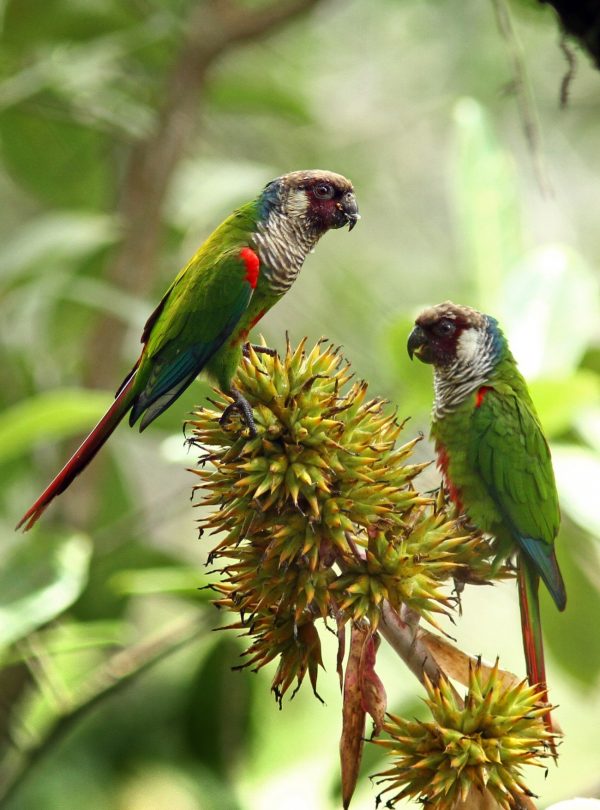
Protect Endangered Parrots in Mexico
Support more work like thisSupport more work like thisThree critical properties in the jungles of southeastern Mexico provide a safe haven for Endangered Yellow-headed Amazon and Endangered Red-crowned Amazon parrots.
-
Species at Risk
4 Species
-
Carbon stored
196,819 mT*
*(metric tons of CO2 equivalents) -
Partner
Pronatura Noreste
-
3,986 Proposed Acres Conserved by
Designation
-
Project Cost: $121,322

3,986
Three critical properties in the jungles of southeastern Mexico provide a safe haven for Endangered Yellow-headed Amazon and Endangered Red-crowned Amazon parrots.
-
Species at Risk
4 Species
-
Carbon stored
196,819 mT*
*(metric tons of CO2 equivalents) -
Partner
Pronatura Noreste
-
3,986 Proposed Acres Conserved by
Designation
-
Project Cost: £88,547

3,986
Project Updates

Protection Success
You helped safeguard Endangered parrots in Mexico
The jungles of the southeastern region of the state of Tamaulipas, Mexico, are home to the Endangered Yellow-headed Amazon and the Endangered Red-crowned Amazon. Three key properties—Regalo de Dios, Ejido Santa Juana and Los Colorados—support these parrots and many other threatened species, and it is urgent that they be protected.
Habitat loss from illegal logging has put the Yellow-headed Amazon and Red-crowned Amazon species in danger of extinction. Outside federal and state protected areas, more than 85 percent of the forests have been deforested for agricultural and livestock use. There are few lands that still preserve the native vegetation of the area.
Rainforest Trust and local partner Pronatura Noreste seek to protect 3,632 acres for threatened species by creating the Regalo de Dios Protected Area, Ejido Santa Juana Protected Area and Los Colorados Protected Area before encroachment from surrounding activities impacts resident species.
Did you know?
endangered parrot species live on these properties.
Explore Endangered Birds

Spoon-billed Sandpiper, courtesy of Bird Conservation Society of Thailand


Yellow-headed Amazon, by Francis Canto
Protect rare parrots from nest poaching
In some areas of Mexico, nest poaching of Yellow-headed and Red-crowned Amazon parrots reaches 100 percent. The least affected populations are usually found on private properties, where owners offer some degree of protection against the poachers and preserve habitat fragments.
Be part of our solution
Rainforest Trust’s local partner will work with Mexican conservation authorities to declare and integrate the three properties into the national network of protected areas. They will also identify the parrots’ abundance, movements and habitat use to determine future priority sites.
To protect the chicks during nesting season, biologists and rangers will survey the protected areas to prevent the poaching of the parrot chicks. For each property, two rangers (one biologist and one person from the Federal Office for Protection of the Environment in Mexico) will conduct surveillance tours at sites where nests have been identified.



